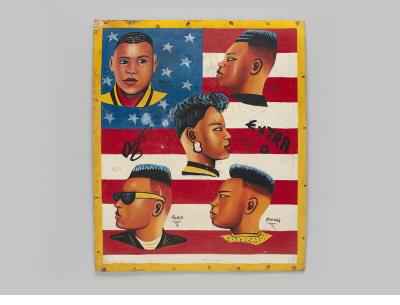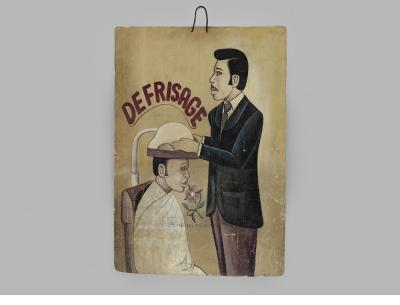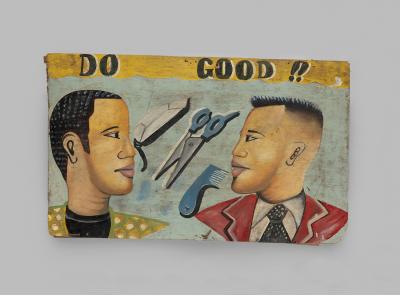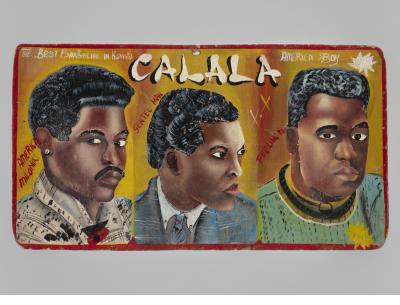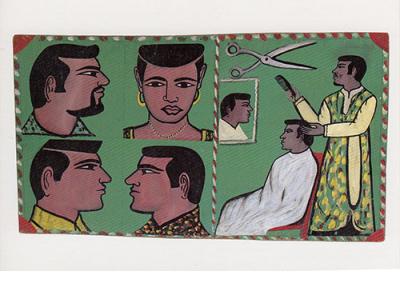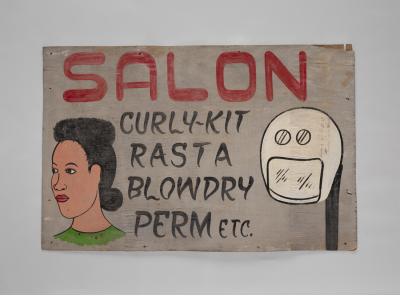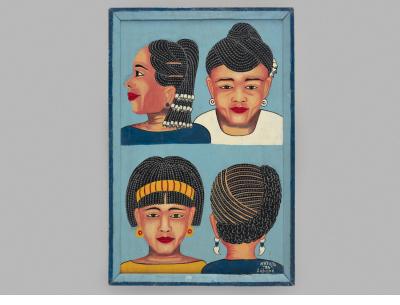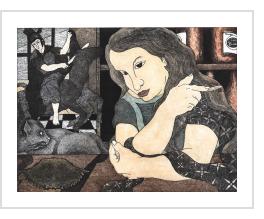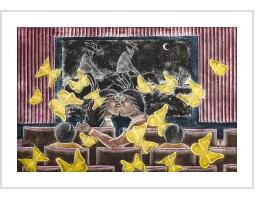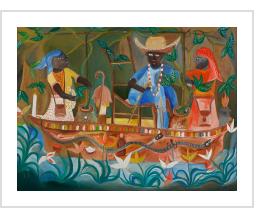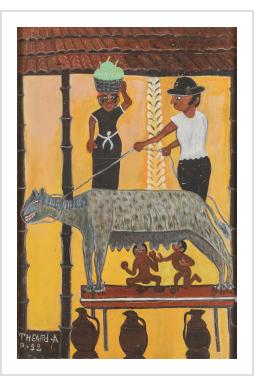Extra 'O' African Barbershop and Hairdressing Signs at SFO Museum
by AFisher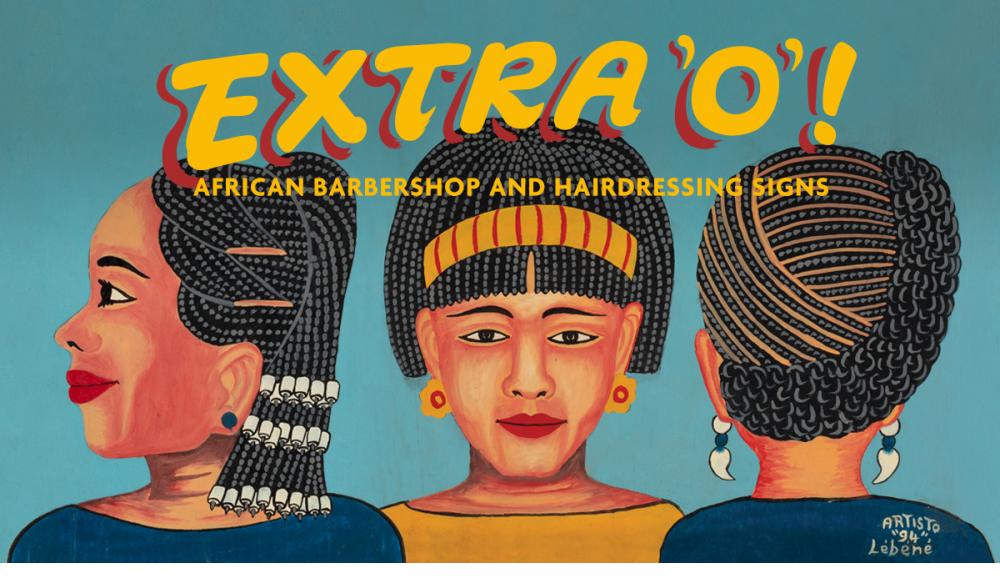
Extra 'O' African Barbershop and Hairdressing Signs
Mar 07, 2020 - Sep 13, 2020
Indigo Arts has loaned part of its collection of African signboards for this exhibit which has opened in Terminal 2 of the San Francisco International Airport.
Hairstyling has a long, rich history in Africa. While some styles have endured for centuries others are long obsolete. New styles change and evolve to keep up with contemporary fashion trends. Barbers and hairdressers are responsible for most of the meticulously faded men's coifs and intricately braided women's hairstyles. Barbershops and hair salons may consist of a simple structure with a hand-painted sign advertising the business nailed to its exterior. Such signs first appeared to advertise services sometime during the 1930s to '50s as urban centers developed in Africa-from Ghana to Kenya. Oftentimes, a portable sign with a handle might be hung outdoors, while an itinerant barber sets up a chair, hanging mirror, and a small table for his scissors, razor, comb, and clippers.
Signs often detail a variety of the latest hairstyles. African American popular culture has long influenced contemporary hairstyles in Africa with named styles such as "America Boy" and "Boeing." The beloved hairstyle of Bob Marley led to dreadlocks returning to favor in Africa during the 1980s, and they remain fashionable to this day as a sign depicting the famous singer demonstrates. Female hairstylists often hang several signs depicting dozens of different braided hairstyles for clients to consider with clever titles including "Sweet Banana," "Top Secret," and "Mother Clear." A number of these homey establishments double as places to gather and socialize while offering additional services, from video game play to cell phone usage, which are also advertised on the hand-painted signs.
Sometimes a barber or hairstylist will fabricate the signs themselves. More often, these signs are painted on wood or particle board with brightly-colored paints by self-taught sign artists who work in studios or independently. Artists also paint imagery directly onto facades of structures. In either case, artists occasionally sign their work with their name, initials, or the name of their workshop.
Presently, many people rely on machine-printing, and hand-painted barbershop and hairdressing signs-a whimsical form of African folk art in the form of advertising-appear less frequently on shop fronts. This exhibition displays a variety of colorful signs from the past forty years from West Africa and Kenya, where barbershops are called kinyozi. One sign on display depicts beloved Cote d'Ivoire soccer player Didier Drogba (b. 1978) while stylish heads set against an American flag appear on another.
The phrase Extra 'O' appears on several signs, which stands for extraordinary, beckoning clients in for exceptional styles. Items relating to hair in traditional African culture are also on view, including headrests and hair combs. In addition, several helmet masks and carved Yoruba twin figures (ibeji) depict historical hairstyles while demonstrating the longstanding tradition and importance of hairstyling in African culture.
(© 2019 by San Francisco Airport Commission. All rights reserved.)
Thanks to the curators of the SFO Museum for inviting Indigo Arts to participate in this exhibit. We hope you can visit the show in person. Many more signs are available at the Barber Shop and Trade Signs from Africa gallery of our website.
